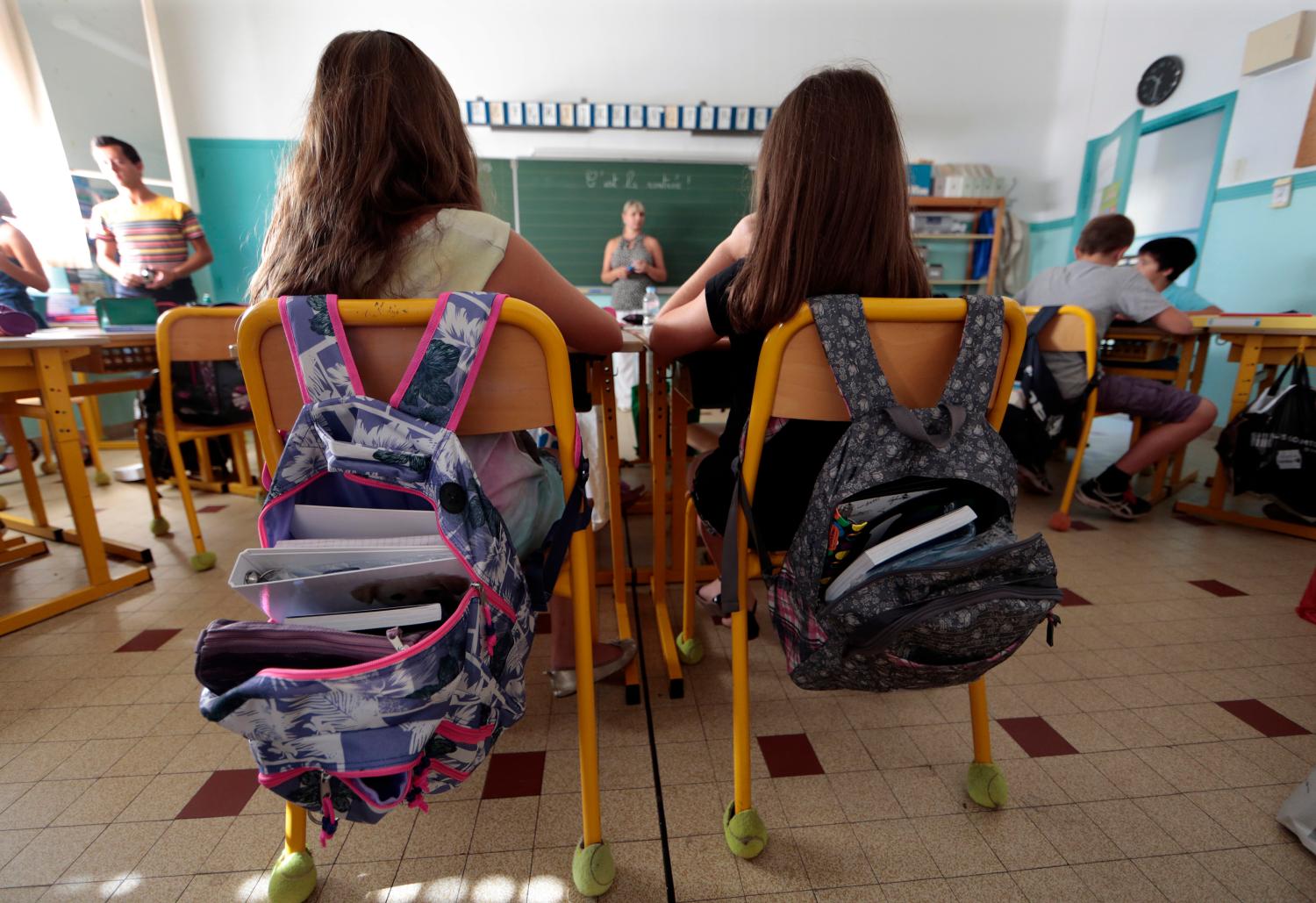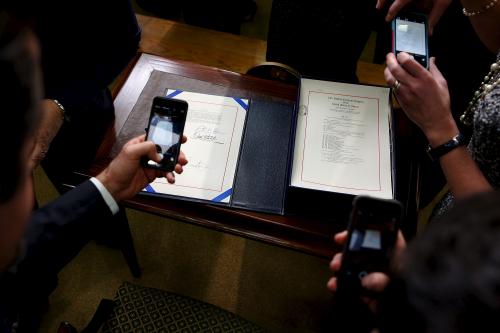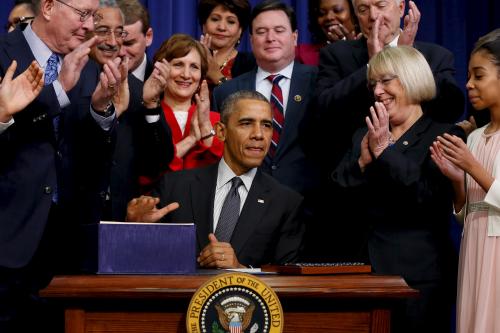As both an education policy researcher and a mother to teenage daughters, I straddle two worlds dominated by acronyms. In the education world, the acronyms are ED, ESSA, and NCLB; In my parenting role, acronyms such as LOL, BTW, and IDK are peppered generously throughout our texting exchanges.
Recently, I realized an acronym was crossing over between these worlds: SNS. In the education world, SNS represents the “supplement-not-supplant” provision of Title I—the section of the federal education law that specifies that federal Title I funds for schools with high concentrations of poverty must be used in a way that augments state and local funding (rather than offsets it). When texting with my teenagers, SNS means “sorry not sorry,” a phrase you might use when you know you’re going to upset another person with your actions but you aren’t actually sorry enough to change your plan.
And, ironically, new draft guidance the U.S. Department of Education released last month on monitoring the “supplement-not-supplant” provision might be perceived as the current administration issuing a big sorry not sorry to equity advocates. Understanding that interpretation requires going back three years to when former President Obama signed the Every Student Succeeds Act (ESSA) and the drama over the law’s SNS provision started.
Equity advocates vs. state and local leaders
This is the department’s third attempt to clarify the SNS requirement since ESSA was passed in late 2015. In the first two rounds, Obama administration officials and equity advocates pushed to use the federal leverage to require districts to “establish an equal base of actual per-pupil [state and local] funding” before accepting federal funds. The thinking was that a spending test would force districts to remedy longstanding patterns of inequitable spending within districts that systematically favored low-poverty schools due to uneven teacher salaries or other staffing ratios (more experienced, credentialed teachers often end up in low-poverty schools).
State and local leaders argued that the proposed rules reflected overreach by attempting to control local spending. Tony Evers, formerly Wisconsin’s state education chief and now its governor, accused the department of “using a small portion of a school district’s budget, its federal dollars, to control the vast majority of a district’s budget, its state and local funds.” The Congressional Research Service warned that the equity spending test went beyond a “plain-language reading of the statute.” Members of Congress took sides in what was deemed the “most high profile dispute about ESSA.”
New guidance permits uneven teacher salaries and uneven staffing
Neither side budged and the negotiating ultimately failed to produce regulations before the administration changed. Two more years went by and on a Friday last month, the Trump administration instead issued SNS “guidance” that does not establish a spending test, making it a disappointment for equity advocates. (Guidance carries less weight than a regulation so it didn’t involve negotiating.)
In its strict adherence to the statute, the guidance does not prohibit a district from spending more on its affluent schools when they have more senior—and thus more expensive—teachers. Sorry not sorry, equity advocates.
Districts now must have an allocation “methodology”—which is a good thing
Though the guidance does not require a spending test, it does require all districts to provide an allocation methodology. This is a spending rationale articulating how the district divvies up its funds across schools – something that’s missing in most districts. District leaders and school board members often don’t recognize the enormity of their role in deciding how to spend the country’s $650 billion public education budget. Many may not have ever articulated an approach to apportioning their public funds, or even thought through the range of options. Hopefully this requirement will prompt them to explore whether their budgets reflect an intentional strategy, habit, or something else.
That said, the methodology requirement is bound to be a source of confusion. The guidance is unclear on what constitutes a legitimate “methodology” beyond that it must treat Title I schools no differently than others. It provides two examples that make sense for larger districts but not the thousands of smaller and mid-sized districts, where allocation tends to be much less structured, making it difficult to capture in a written methodology.
Furthermore, the really interesting district allocations happen on the margin after some methodology is applied. Think of a district with an unexpected surplus inviting proposals from principals about how to apply excess funds. Or a hold-harmless policy that protects some schools from losing staff during budget cuts. Or when district leaders make a change in response to a board member’s request. In all of these cases, we may still see excess spending in affluent schools, even if a proper methodology was applied at the outset. With no federal guidance, state agencies tasked with compliance will have to develop their own interpretations of permissible spending.
A critical detail in FAQ #10 allows uneven allocations for “specialized programming”
Buried in the Frequently Asked Questions is a mention that districts may make uneven allocations for “specialized programming.” These two words may prove to be the most important in the whole document. What the phrase does is offer a SNS-permissible rationale for virtually any district allocation made to any school, anywhere, anytime.
Imagine a district offering its non-Title I schools disproportionately more music teachers, STEM teachers, AP teachers, or outdoor programs. The district can simply point out that it does so because these schools host a symphony program, are STEM-themed, are AP-focused, or label the schools as magnets. Literally any allocation I can think of could be justified as “specialized programming.” And that will make it near-impossible to declare a district in violation of the SNS provision even though many of these examples violate the spirit of the law.
The guidance restates the law over and over, and that’s worth something
Repeatedly the document reiterates the essence of the SNS provision: Districts are to “allocate state and local funds to each school, without regard for whether a school receives Title I, Part A funds.” It’s a necessary message. Those of us who interact with districts routinely hear district leaders describe how they add extra funds for non-Title I schools precisely “because they don’t get Title I.” That’s a clear violation of the law. Let’s hope districts can hear it.
Reason for optimism on equity
Though the department’s reversal on promoting more equitable spending across schools may disappoint many equity hawks, the issue is not dead. While not relevant for SNS, ESSA has another provision that requires the public reporting of school-by-school spending. Those data will emerge in the next year and likely fuel a whole new set of demands on districts to remedy spending inequities across schools. I expect the data will surface spending patterns that for many locales will be indefensible, regardless of SNS, and the public will be empowered to hold district leaders accountable for this spending and advocate for change.
And that’s my POV, FWIW.
The Brookings Institution is committed to quality, independence, and impact.
We are supported by a diverse array of funders. In line with our values and policies, each Brookings publication represents the sole views of its author(s).








